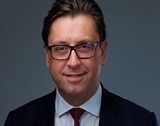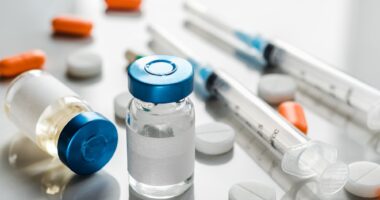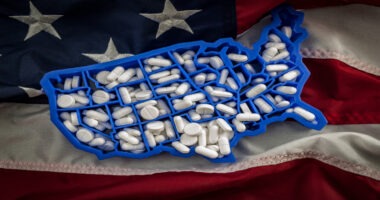Executive Changes: What is Ahead for Sanofi’s New CEO
Sanofi CEO Olivier Brandicourt has announced plans to retire, effective September 1, with Paul Hudson, head of Novartis’ pharmaceutical division, taking the helm. With Sanofi facing competition in its diabetes-drug franchise and recent moves in rare diseases, what are the challenges and opportunities for the new CEO?
Inside Sanofi
In taking on the CEO position at Sanofi, Hudson brings 28 years of experience with major pharmaceutical companies, such as Schering Plough, AstraZeneca and Novartis. Brandicourt will leave Sanofi after four years as CEO having joined Sanofi as CEO in April 2015 following his role as CEO with Bayer Healthcare AG from 2013-2015.
Like Brandicourt, Hudson will face a similar challenge in dealing with generic competition for the company’s flagship product, Lantus (insulin glargine), a long-acting analog of human insulin and the company’s top-selling drug in 2018. Lantus posted 2018 sales of EUR 3.565 billion ($4.037 billion), down 23% on a reported basis and 19% at a constant currency basis compared to 2017. Lantus is the key piece of the company’s diabetes-drug franchise, its largest revenue area, which totaled sales of EUR 5.472 billion ($6.196 billion) in 2018, down 14.5% on a reported basis and 10.4% on a constant currency basis compared to 2017. Table I (at end of article) summarizes the company’s 2018 sales from its product franchises.
 |
|
Paul Hudson |
A major issue for Sanofi is increased generic-drug competition for Lantus. A biosimilar of Lantus from Eli Lilly and Company was launched in most European markets under the name Abasaglar in 2015, and as Basaglar in the US in December 2016. It has also been launched in Japan and in several other countries worldwide. In 2018, the FDA issued a Complete Response Letter to Mylan for its biosimilar insulin glargine, which has been approved in Europe under the trade name of Semglee and is available in several European countries. In 2018, Merck & Co and Samsung Bioepis announced that they had abandoned global plans to commercialize Lusduna, their biosimilar of Lantus.
Sanofi’s efforts to gain market share with next-generation long-acting insulin products and other diabetes drugs to bolster its diabetes-drug franchise in the wake of sales erosion from Lantus has been met with limited success. From 2015 to 2018, net sales for its diabetes-drug franchise decreased at an annualized average rate of 7.4%. Toujeo (insulin glargine), a long-acting insulin positioned as the next-generation long-acting insulin for the company and the second leading drug in the company’s diabetes-drug franchise, tallied sales of EUR 840 million ($951 million) in 2018, up 2.9% on a reported basis and 7.2% on a constant currency basis. Both Lantus and Toujeo faced sales declines in the US resulting from a decrease in average net selling prices. Sanofi said it expects further declines in its net selling price for its insulin glargines (i.e., long-acting insulins) in 2019 as it plans to offer further rebates in the US in order to maintain broad coverage by commercial insurers and Medicare, according to the company’s 2018 annual filing with the US Securities and Exchange Commission.
Key strategic areas for Sanofi
Outside of diabetes, rare-diseases is the second largest product franchise for Sanofi, which posted 2018 sales of EUR 2.958 billion ($3.350 billion), up 2.4% on a reported basis and 8.3% on a constant currency basis year over year. Key products in this area are enzyme-replacement therapies, Cerezyme (imiglucerase) for treating Gaucher disease and Fabrazyme (agalsidase beta) for treating Fabry disease, with respective sales of EUR 711 million ($806 million) and EUR 755 million ($856 million) in 2018. Both products were gained by Sanofi’s $20-billion acquisition of Genzyme in 2011.
Sanofi is seeking to build its rare-disease product portfolio with two acquisitions made by Brandicourt: the $11.6-billion acquisition of Bioverativ in 2018 and the $4.8-billion acquisition of Ablynx, also in 2018.
Bioverativ, a Waltham, Massachusetts-headquartered company, was created from the spin-off of Biogen’s hemophilia business, and would add to Sanofi’s rare blood disorder franchise. Biogen spun off its global hemophilia business into a separate company, Bioverativ, as a new independent, publicly traded biotechnology company focused on hemophilia and other rare blood disorders in February 2017. Bioverativ generated 2017 revenues of $1.17 billion.
At the time of the acquisition, Sanofi said that the acquisition met one of the priorities of Sanofi’s 2020 strategic roadmap to focus on areas where the company currently has, or can effectively build, a leadership position. Sanofi said that the addition of Bioverativ supports this priority by adding a differentiated offering of innovative therapies and providing a platform for growth in rare blood disorders, which expands its position in specialty care and rare diseases.
Ablynx is a Ghent, Belgium-based biopharmaceutical company focused on developing and commercializing proprietary therapeutic proteins based on single-domain antibody fragments. Sanofi said at the time of the acquisition that the acquisition continues its focus on technologies addressing multiple disease targets with single multi-specific molecules. Ablynx has a pipeline of more than 45 proprietary and partnered Nanobody (the proprietary name for its therapeutic proteins based on single-domain antibody fragments) candidates for a range of therapeutic areas such as hematology, inflammation, immuno-oncology, and respiratory diseases, according to Sanofi. Eight Nanobodies have entered clinical development. Ablynx’s most advanced product in development is caplacizumab, an anti-von Willebrand factor Nanobody, for treating acquired thrombotic thrombocytopenic purpura, a rare blood disorder.
Challenges for growth remain
The key question for Sanofi and its new CEO, however, is what products or product areas will be able to drive growth in the future. Rare diseases represent a more niche product area, and the company’s acquisitions in this area in 2018 will not have an immediate impact on revenue. Among hopeful products cited by analysts is Sanofi’s and Regeneron Pharmaceuticals’ Dupixent (dupilumab), a human monoclonal antibody that is designed to specifically inhibit overactive signaling of two key proteins, IL-4 and IL-13, which are believed to be major drivers of persistent underlying inflammation in atopic dermatitis (AD), a common form of eczema. The drug was approved by the US Food and Drug Administration in March 2017 for treating moderate-to-severe AD cases whose disease is not adequately controlled with topical prescription therapies, or when those therapies are not advisable. Some industry analysts project 2021 sales of $2.8 billion. In 2018, the drug posted sales of EUR 788 million ($892 million), of which sales of EUR 660 million ($747 million) were generated in the US.
Sanofi and Hudson, however, will need further innovation and product growth to drive the company going forward. Overall, in 2018, sales for the company’s Pharmaceuticals Segment, which includes its prescription drugs, were EUR 24.685 billion ($27.931 billion), down 1.9% on a reported basis and up 2.4% at constant exchange rates. Outside of Lantus, the company had only three other blockbusters, defined as drugs with sales of $1 billion, in 2018, in its key product franchises. These included Aubagio (teriflunomide), a drug to treat multiple sclerosis with 2018 sales of EUR 1.647 billion ($1.863 billion), and two drugs from its cardiovascular franchise: Lovenox (enoxaparin), an anticoagulant with 2018 sales of EUR 1.465 billion ($1.658 billion), and Plavix (clopidogrel) for treating atherothrombosis with 2018 sales of EUR 1.440 billion ($1.629 billion).
Both Lovenox and Plavix are late in their product lifecycles and face increased generic-drug competition. Lovenox faces increased competition in Europe (2018 sales in Europe of EUR 870 million ($984 million, down 8.3% on a constant currency basis) with the arrival of biosimilars in various countries, including Germany, France, Italy, Poland and the UK. The impact of generic competition is also being felt in the US, where the product saw net sales decrease by 29.3% on a constant currency basis to EUR 38 million ($43 million) in 2018. Plavix saw growth in emerging markets, which accounted for the lion’s share of its sales in 2018 with sales in emerging markets of EUR 1.075 billion ($1.216 billion), but only sales of EUR 218 million ($247 million) in the rest of the world.
| Table I: Sanofi’s Product Franchises: 2018 Sales and Comparison to 2017 | ||
| Product Franchise | 2018 Revenues | Change from 2017 (reported basis and at constant exchange rates (CER) |
| Diabetes | EUR 5.472 billion ($6.196 billion) | -14.5% on a reported basis; -10.4% CER |
| Rare diseases (excluding rare blood disorders) | EUR 2.958 billion ($3.350 billion) | +2.4% on a reported basis; +8.3% CER |
| Multiple sclerosis | EUR 2.049 billion ($2.320 billion) | +0.4% on a reported basis; +4.4% CER |
| Oncology | EUR 1.494 billion ($1.693 billion) | -1.5% on a reported basis; +2.1% CER |
| Rare blood disorders | EUR 897 million ($1.016 billion) | Not applicable; new product launches |
| Immunology | EUR 871 million ($1.017 billion) | +279% on a reported basis; +287% CER |
| Cardiovascular | EUR 611 million ($693 million) | +19.8% on a reported basis; +23.5% CER |
| Established Prescription Products | EUR 8.843 billion ($10.023 billion) | -9.9% on a reported basis; -6.1% CER |
| Generics | EUR 1.490 billion ($1.689 billion) | -15.8% on a reported basis; -9.8% CER |
Source: Company information






